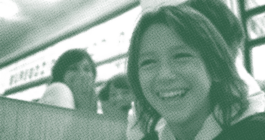



Welcome to the website dedicated to the ethnological and anthropological study of children and childhoods.
The anthropology of childhood explores the perspectives and experiences of children and young people, and their involvement in social relationships, broader structures and the environment around them. Childhood experiences vary according to cultural setting, social class, gender, historical period, and geographical, political, and socioeconomic circumstances.
Research with children and adolescents often employs photographs and other visual methods that provide insight into their perspectives while also providing a photographic record of childhood in the contemporary era.
The Social Life of Chores: Rethinking Work in Childhood was a postdoctoral research project that ran from August 2019 to July 2021. The project explored conceptualizations of the daily work and play/leisure of primary school children in a rural and urban setting in Slovenia using semi-structured interviews with parents and grandparents, as well as participatory photography and photo elicitation interviews with children. Five grandparents (two men and three women), 23 parents (19 mothers and four fathers), and 26 children (12 girls and 14 boys) between the ages of five and fifteen participated in the study. In total, the elementary school children took 1068 pictures, each of them taking between 12 and 178 pictures. I also conducted content analysis of children's magazine Pionirski list / PIL.
The aim of the project was twofold. First, it examined how children actively make meaning through their everyday engagement in work that take place in the family setting. Second, it examined how specific conceptualizations of work and play/leisure are related to different cultural contexts (urban vs. rural) and political and socioeconomic circumstances (from the predominant agricultural domestic economy in the first half of the 20th century to post-World War II socialist Yugoslavia to today's post-socialist neoliberal economic system) and how these different conceptualizations manifest in children's daily lives across generations.
The primary school children in this study viewed work as an activity that is an obligation, an activity that requires following someone's instructions, and that is often boring. In this regard, school was often associated with work, although some children also viewed school work as fun and interesting. Play, on the other hand, was understood as an activity that one does out of inner motivation, an activity where one can do what one wants and have fun. However, the categories of work and play were not clear-cut. They classified activities subjectively, depending on how they felt about doing them. Thus, driving a tractor or harvesting potatoes could be perceived as play, while practicing the clarinet for music school could be perceived as work.
© 2021 Barbara Turk Niskač • The website was developed as part of the postdoctoral research project The Social Life of Chores: Re-thinking Work in Childhood (Z6 1881), funded by the Slovene Research Agency. • Design: Miko Resi

Welcome to the website dedicated to the ethnological and anthropological study of children and childhoods.
The anthropology of childhood explores the perspectives and experiences of children and young people, and their involvement in social relationships, broader structures and the environment around them. Childhood experiences vary according to cultural setting, social class, gender, historical period, and geographical, political, and socioeconomic circumstances.
Research with children and adolescents often employs photographs and other visual methods that provide insight into their perspectives while also providing a photographic record of childhood in the contemporary era.
The Social Life of Chores: Rethinking Work in Childhood was a postdoctoral research project that ran from August 2019 to July 2021. The project explored conceptualizations of the daily work and play/leisure of primary school children in a rural and urban setting in Slovenia using semi-structured interviews with parents and grandparents, as well as participatory photography and photo elicitation interviews with children. Five grandparents (two men and three women), 23 parents (19 mothers and four fathers), and 26 children (12 girls and 14 boys) between the ages of five and fifteen participated in the study. In total, the elementary school children took 1068 pictures, each of them taking between 12 and 178 pictures. I also conducted content analysis of children's magazine Pionirski list / PIL.
The aim of the project was twofold. First, it examined how children actively make meaning through their everyday engagement in work that take place in the family setting. Second, it examined how specific conceptualizations of work and play/leisure are related to different cultural contexts (urban vs. rural) and political and socioeconomic circumstances (from the predominant agricultural domestic economy in the first half of the 20th century to post-World War II socialist Yugoslavia to today's post-socialist neoliberal economic system) and how these different conceptualizations manifest in children's daily lives across generations.
The primary school children in this study viewed work as an activity that is an obligation, an activity that requires following someone's instructions, and that is often boring. In this regard, school was often associated with work, although some children also viewed school work as fun and interesting. Play, on the other hand, was understood as an activity that one does out of inner motivation, an activity where one can do what one wants and have fun. However, the categories of work and play were not clear-cut. They classified activities subjectively, depending on how they felt about doing them. Thus, driving a tractor or harvesting potatoes could be perceived as play, while practicing the clarinet for music school could be perceived as work.
© 2021 Barbara Turk Niskač • The website was developed as part of the postdoctoral research project The Social Life of Chores: Re-thinking Work in Childhood (Z6 1881), funded by the Slovene Research Agency. • Design: Miko Resi